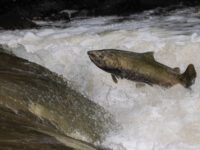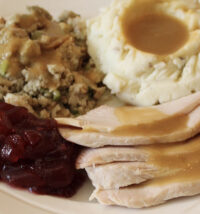
Cold weather equals bad news for grape growers. Submitted photo
This year the bad news will cost millions. “The number of calls we’ve received has been unprecedented,” said Chris Maloney of Chris Maloney Crop Insurance Services in Petaluma, “We’ve opened well over 200 Notices of Damage on behalf of our policy-holders just this week.” The damage, from March 31 through the third and fourth week of April, has ranged from Dry Creek, Russian River, Petaluma, the Stags Leap area, Calistoga, and Sonoma, she said. The full extent cannot yet be estimated.
“We’ve had individual reports as high as 60 percent to as low as nothing,” said Sonoma County Agricultural Commissioner Lisa Correia. She said the low-lying areas were hardest hit, areas which had not previously been prone to frost, and so had no frost protection measures in place.
“No area has been spared totally,” said Nick Frey, president of the Sonoma County Winegrape Commission, ”Some parts, such as Dry Creek, have never had frost before. But now, there’s significant damage.”
Viticulturist James Stamp said, “In terms of Sonoma County, what I’m hearing is this is the worst frost event in 30 years.” The damage is not to the vine itself, which the frost will not kill, but to the new shoots which produce the grape clusters and are just now forming. “The vines are in a very sensitive state now,” said Stamp, “So the way to avoid is to turn sprinkler on or turn the fans on.” This can be counter productive. “One vineyard in Sonoma has been using sprinkler frost protection for the last several weeks, and because they used so much water, they couldn’t keep the high cover crop mowed.” High ground cover traps cold, Stamp said, and so, in those vineyards, the frost was worsened. “They’ve suffered up to 20 percent loss of the fruit clusters.”
If the frost kills the primary shoot, where the grapes occur, the grower will have to wait for the secondary clusters to form, if they do at all. It’s the yield which is damaged, said Nick Frey, the grower’s bottom line. “The reason it’s a big issue as a grower is that you get a paycheck once a year,” said Frey, “and you think you’ll be getting $50,000, but then it comes in under. You work the same, and you’re going to have less income. It’s part of farming. These things are going to happen.”
Damage estimates have not been calculated yet, nor has the danger been declared over. But, said Frey, “if it were even one percent, for a $400 million crop, that one percent is $4 million. It has impact in the aggregate that will be manageable, but for the individual grower, it can be a big economic hit.”
Stamp said he is seeing another, indirect, hit: having run the sprinklers as frost protection for so long, some vineyards may be using up their water supplies for the year. He said for some, a shortage of water as well as grapes this year is likely, and with it, a higher cost of wine.
“These are very good farmers,” Maloney said. “Their crops are high value, and they’re doing everything they can to frost protect. The weather just doesn’t seem normal anymore.”






